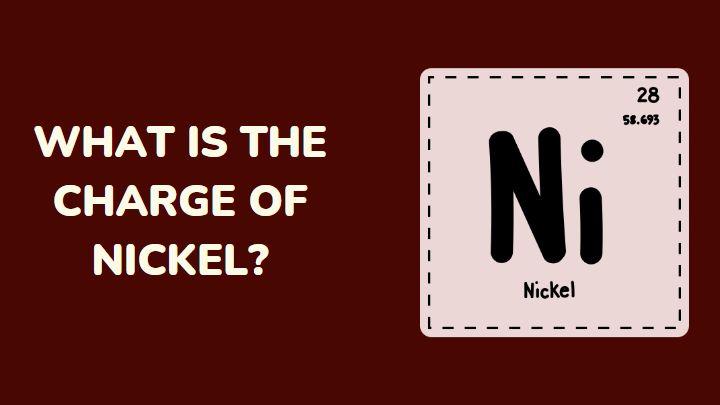What is the charge of nickel?
Nickel is a group 10 ferromagnetic metal that is known for its high resistance to corrosion and oxidation.
This metal is good for plating, battery production, coloring ceramics, and catalytic reactions. Nickel is also an essential nutrient for proper body functioning. It plays an important role in lipid metabolism and is highly involved in various metabolic activities.
One of the many properties of nickel is its ability to have different charges. This has got many students and teachers of science wondering what the exact charge of nickel is.
Let’s find out in this article.
Properties of nickel
- Nickel is the 28th element of the periodic table
- It has an atomic number of 28 and a mass number or atomic weight of 58.69
- Nickel has an electronic configuration of [Ar]3d84s2
- Melting point, boiling point, density: 1,453 °C (2,647 °F), 2,732 °C (4,950 °F), 8.902 (25 °C)
- It has a silvery-white shiny appearance with slight gold tinges which makes it good for making coins
- Nickel is a tough metal
- It also has a high electrical and thermal conductivity
What is the charge of nickel?
Nickel exhibits the following charges: -1, 0, +1, +2, and +4. These charges are the same as its various oxidation states. +2 is the most common charge but it can exhibit any of these charges when it reacts with other elements to form various compounds.
What is the charge of nickel in nickel chloride?
In nickel chloride (NiCl2), Ni has a +2 charge.
What is the charge of nickel in nickel oxide?
In nickel oxide (NiO), Ni carries a +2 charge.
FAQs
Can nickel have a +1 charge?
Yes, nickel can have a +1 charge when it loses only one of its Valence electrons. It forms an ion called nickel (I).
Is nickel a cation?
Yes. Nickel is a cation. It is a divalent metal cation. Nickel can also form an anion called nickellate when it carries a negative charge.
What elements does nickel react with?
Nickel readily tracts with chlorine, sulfur, and oxygen to form different nickel compounds. Nickel reacts with fluorine but slowly. In its pure metallic form, nickel is chemically unreactive.
Conclusion
Nickel is a positively charged metal. Therefore, it has a charge of +2. But, in different compounds, it also has charges such as -1, 0, +1, +3, and +4. +2, however, remains the most common charge.
A large majority of the Ni compounds used in industries have the +2 charge. Some of these compounds include nickel chloride (NiCl2), nickel nitrate (Ni(NO3)2·6H2O), nickel sulfamate (Ni(SO3NH2)2∙4H2O), nickel sulfate (NiSO4), nickel oxide (NiO), and nickel peroxide (Ni2O3).
Thanks for reading.
Gezro has more informational guides on various elements of the periodic table. You should check them out.
